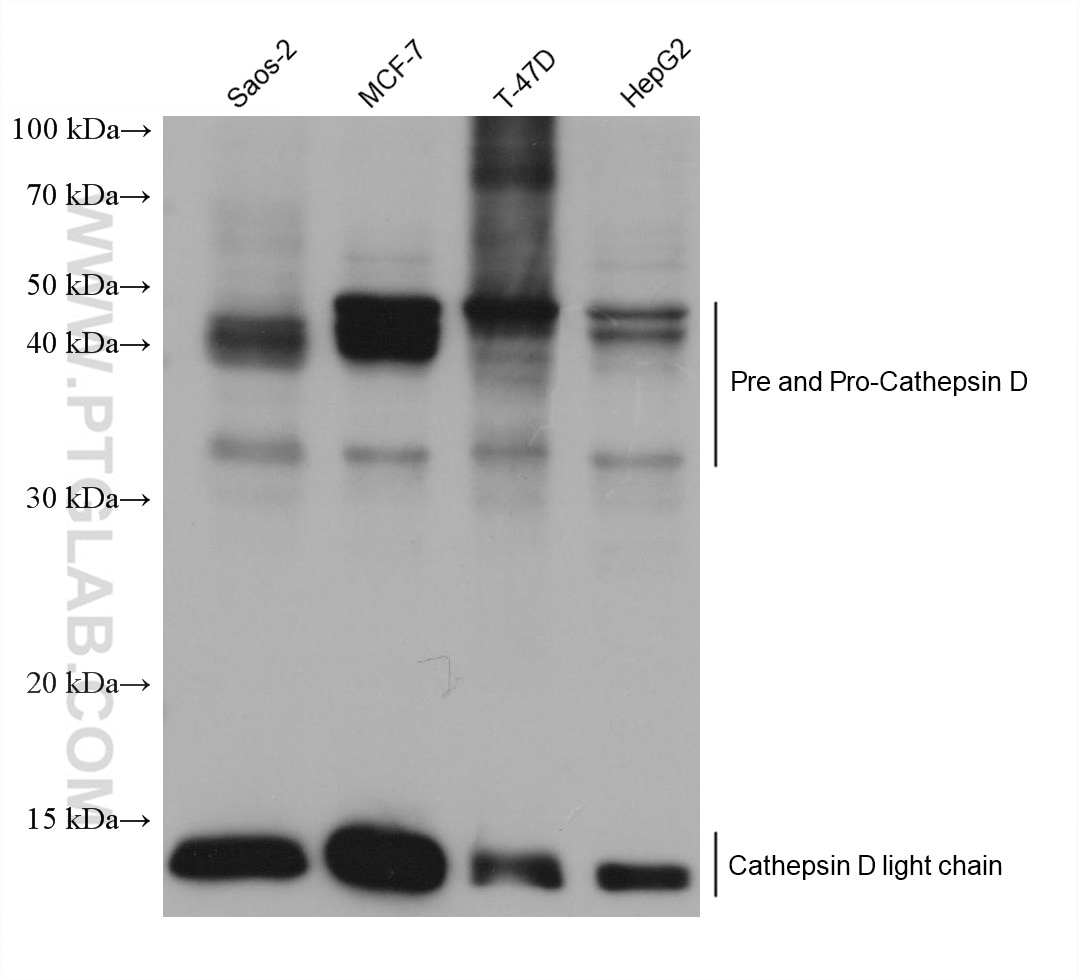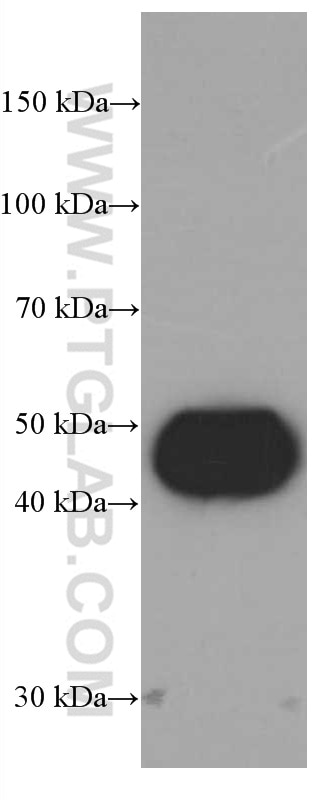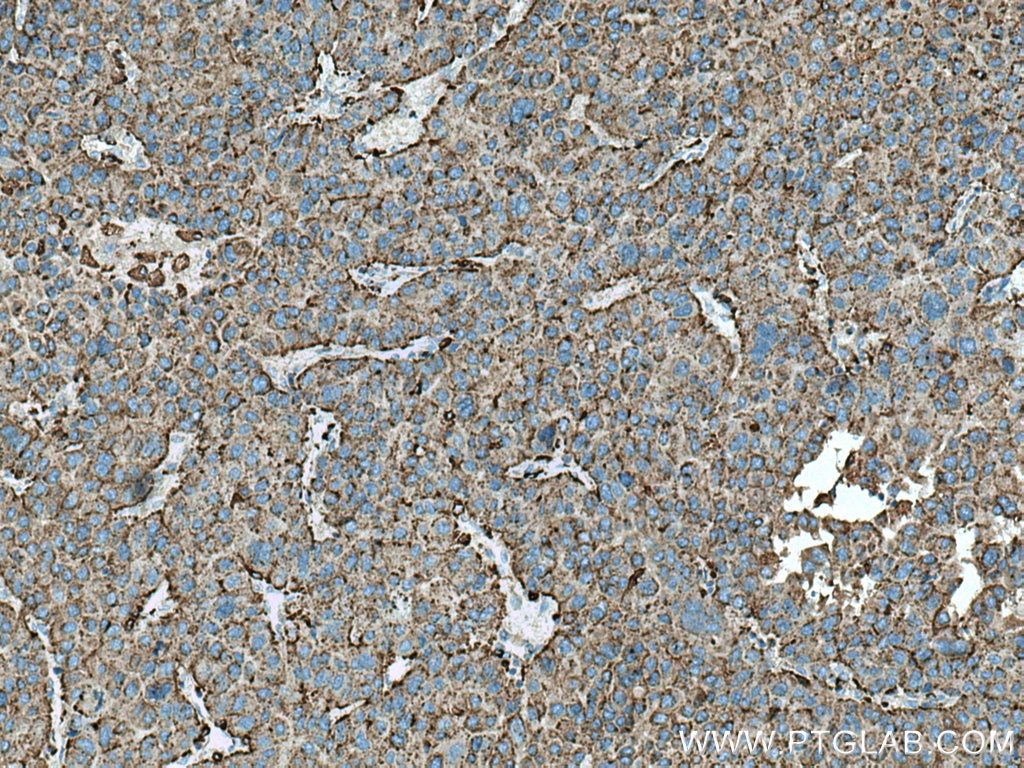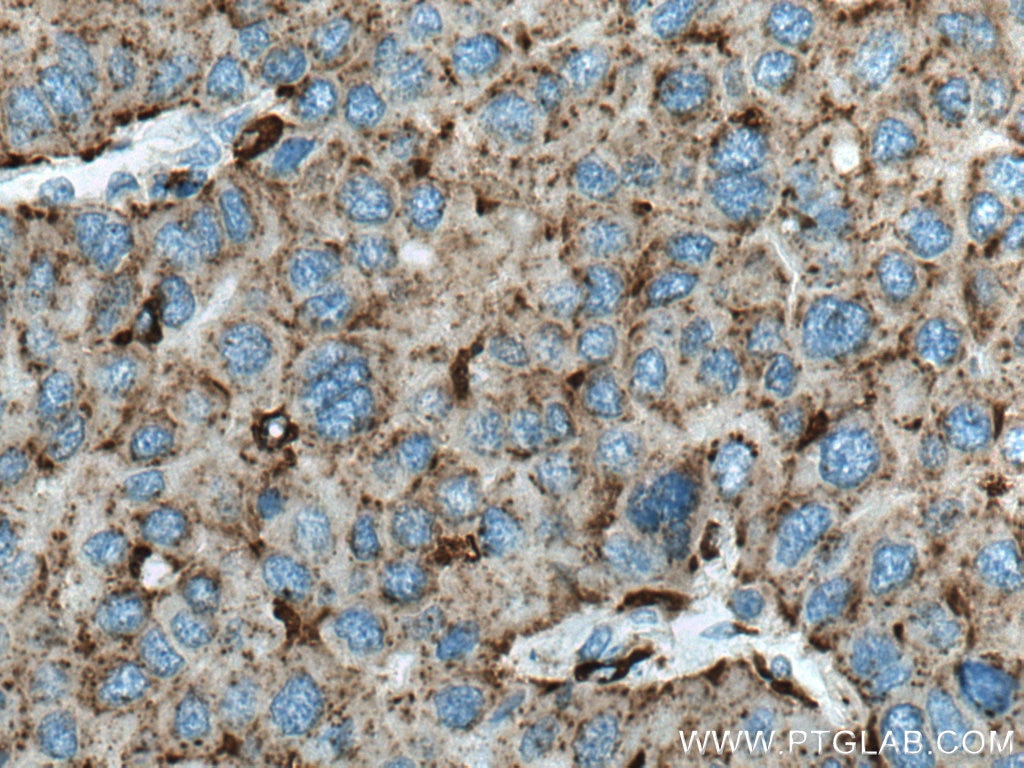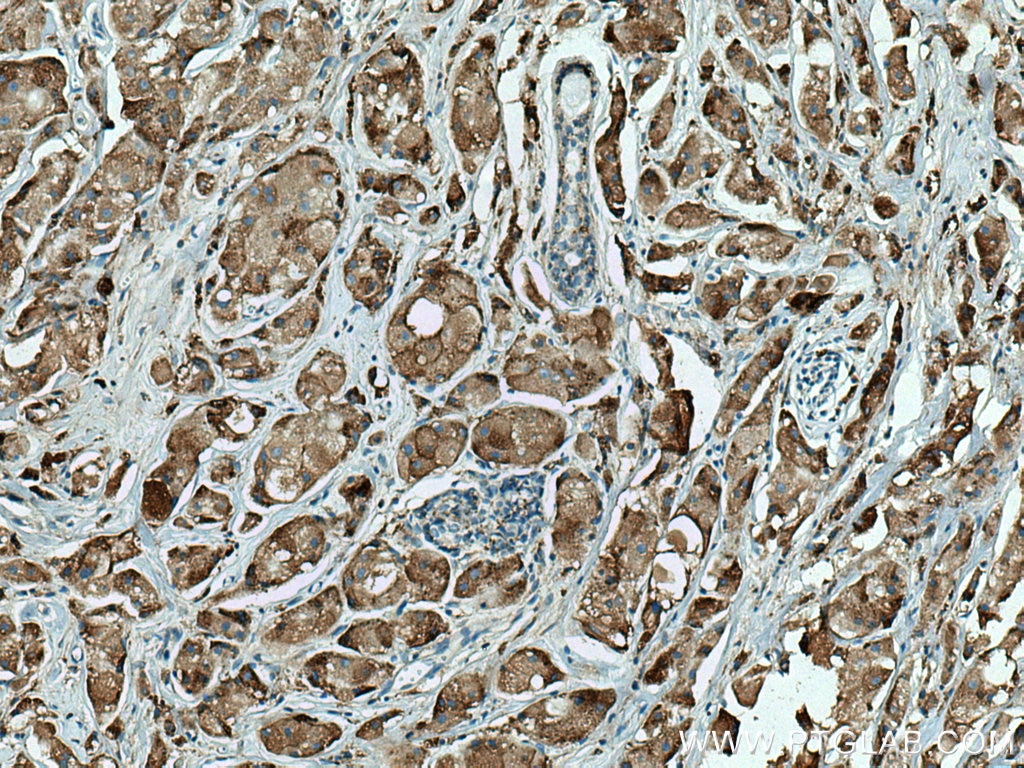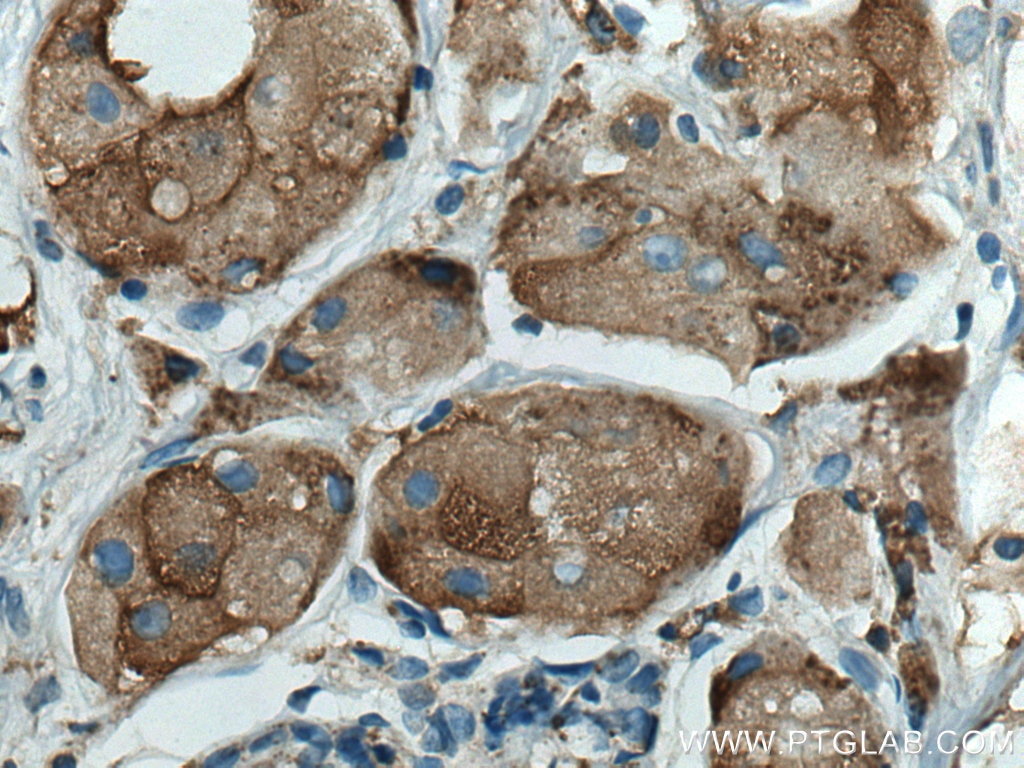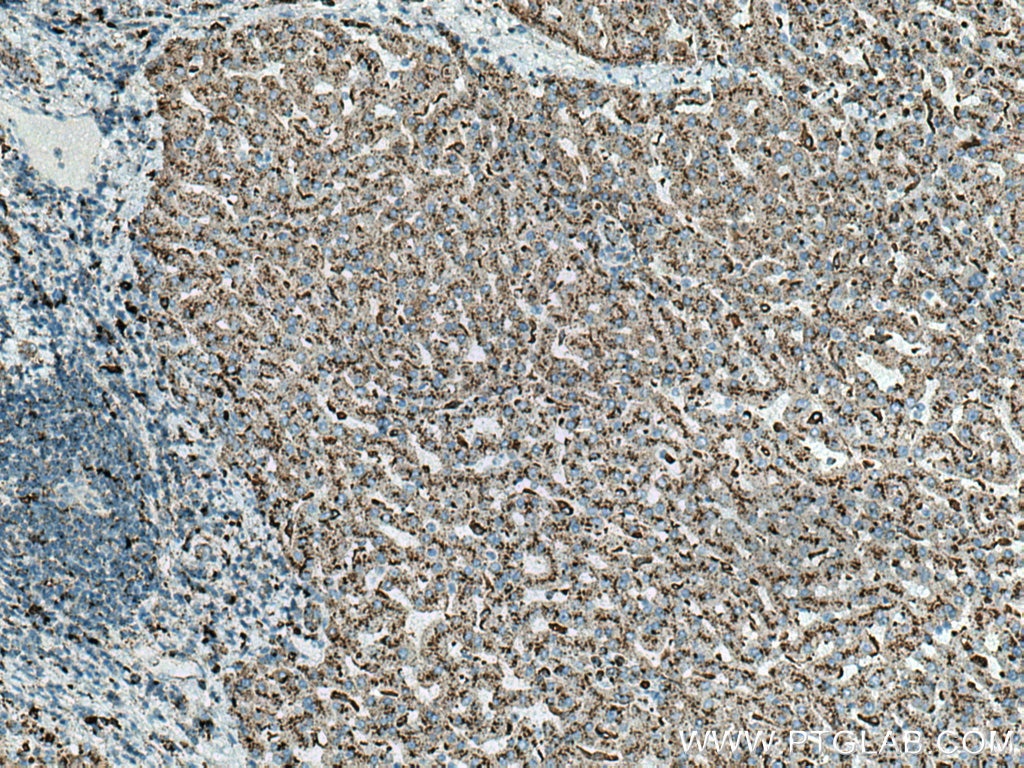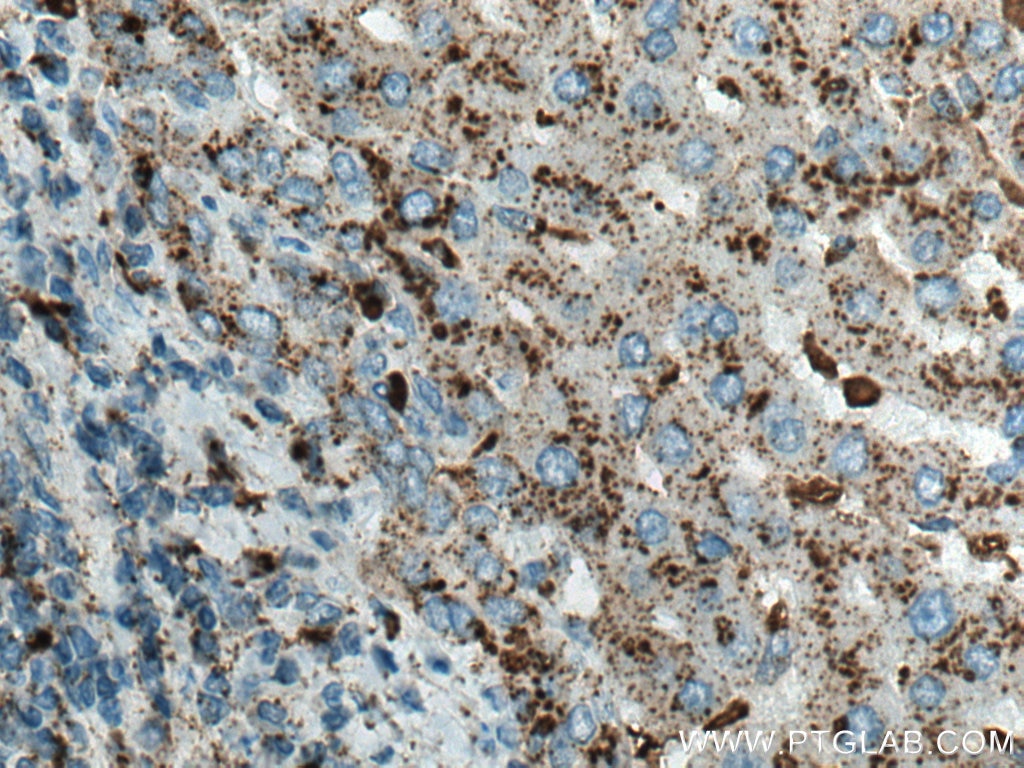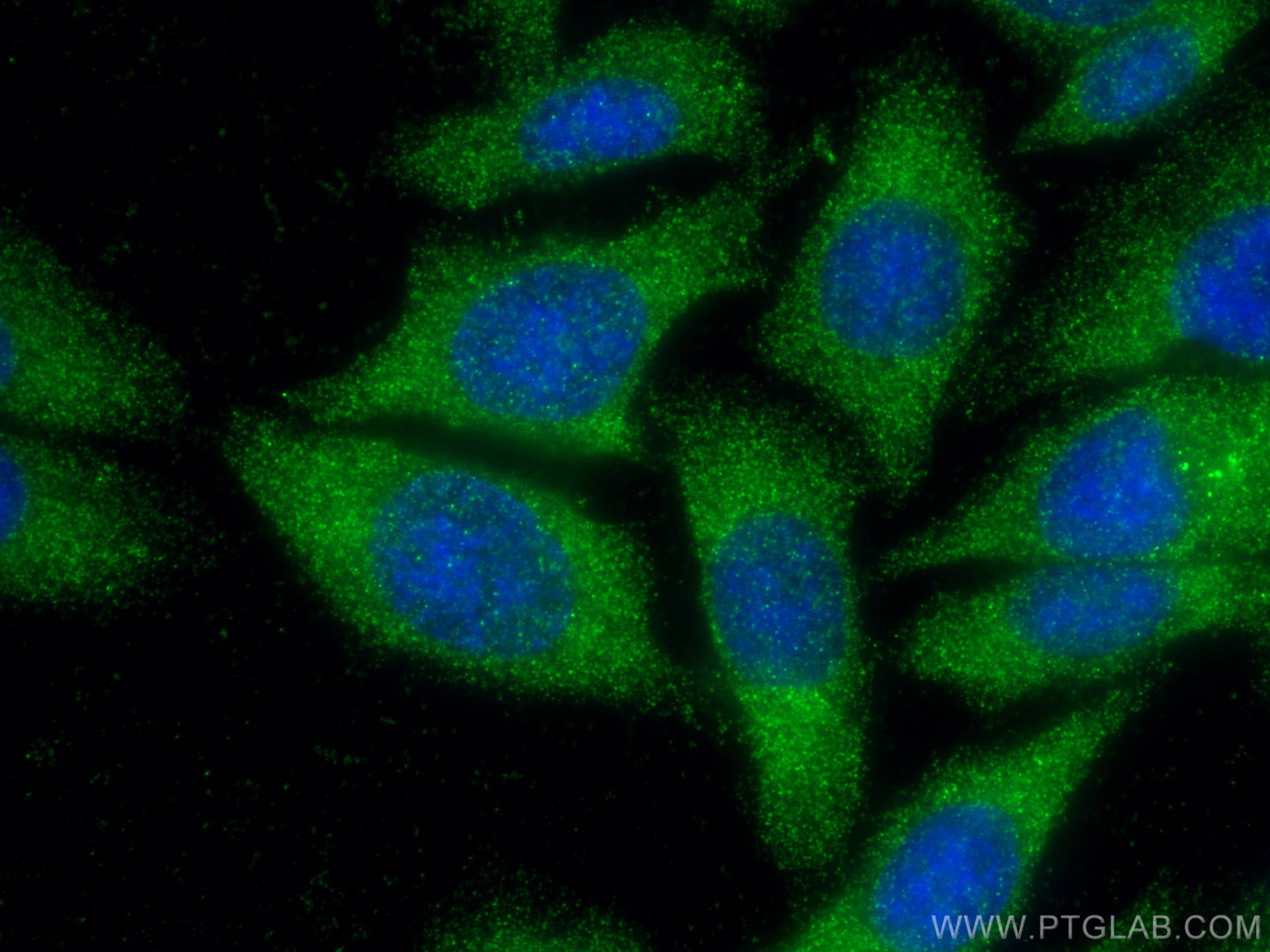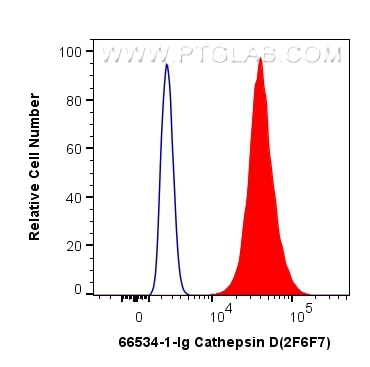- Featured Product
- KD/KO Validated
Cathepsin D Monoclonal antibody
Cathepsin D Monoclonal Antibody for WB, IF, FC, IHC, ELISA
Host / Isotype
Mouse / IgG2b
Reactivity
Human and More (2)
Applications
WB, IF, FC, IHC, ELISA
Conjugate
Unconjugated
CloneNo.
2F6F7
Cat no : 66534-1-Ig
Synonyms
Validation Data Gallery
Tested Applications
| Positive WB detected in | Saos-2 cells, MCF-7 cells, T-47D cells, HepG2 cells |
| Positive IHC detected in | human liver cancer tissue, human breast cancer tissue Note: suggested antigen retrieval with TE buffer pH 9.0; (*) Alternatively, antigen retrieval may be performed with citrate buffer pH 6.0 |
| Positive IF detected in | HepG2 cells |
| Positive FC detected in | HepG2 cells |
Recommended dilution
| Application | Dilution |
|---|---|
| Western Blot (WB) | WB : 1:5000-1:50000 |
| Immunohistochemistry (IHC) | IHC : 1:500-1:2000 |
| Immunofluorescence (IF) | IF : 1:200-1:800 |
| Flow Cytometry (FC) | FC : 0.40 ug per 10^6 cells in a 100 µl suspension |
| It is recommended that this reagent should be titrated in each testing system to obtain optimal results. | |
| Sample-dependent, Check data in validation data gallery. | |
Published Applications
| KD/KO | See 1 publications below |
| WB | See 6 publications below |
| IHC | See 1 publications below |
| IF | See 2 publications below |
Product Information
66534-1-Ig targets Cathepsin D in WB, IF, FC, IHC, ELISA applications and shows reactivity with Human samples.
| Tested Reactivity | Human |
| Cited Reactivity | human, rat |
| Host / Isotype | Mouse / IgG2b |
| Class | Monoclonal |
| Type | Antibody |
| Immunogen | Cathepsin D fusion protein Ag15254 |
| Full Name | cathepsin D |
| Calculated Molecular Weight | 412 aa, 45 kDa |
| Observed Molecular Weight | 32 kDa, 48 kDa, 52 kDa |
| GenBank Accession Number | BC016320 |
| Gene Symbol | CTSD |
| Gene ID (NCBI) | 1509 |
| RRID | AB_2881897 |
| Conjugate | Unconjugated |
| Form | Liquid |
| Purification Method | Protein A purification |
| Storage Buffer | PBS with 0.02% sodium azide and 50% glycerol pH 7.3. |
| Storage Conditions | Store at -20°C. Stable for one year after shipment. Aliquoting is unnecessary for -20oC storage. 20ul sizes contain 0.1% BSA. |
Background Information
CTSD (Cathepsin D) is also named as CPSD, belongs to the peptidase A1 family. It is ubiquitously expressed and is involved in proteolytic degradation, cell invasion, and apoptosis. Human CTSD is synthesized as a 52-kDa precursor that is converted into an active 48-kDa single-chain intermediate in the endosomes, and then into a fully active mature form, composed of a 34-kDa heavy chain and a 14-kDa light chain, in the lysosomes. It is a lysosomal acid protease found in neutrophils and monocytes and involved in the pathogenesis of several diseases such as breast cancer and possibly Alzheimer disease. (PMID: 27114232, PMID: 30717773, PMID: 30051532)
Protocols
| Product Specific Protocols | |
|---|---|
| WB protocol for Cathepsin D antibody 66534-1-Ig | Download protocol |
| IHC protocol for Cathepsin D antibody 66534-1-Ig | Download protocol |
| IF protocol for Cathepsin D antibody 66534-1-Ig | Download protocol |
| FC protocol for Cathepsin D antibody 66534-1-Ig | Download protocol |
| Standard Protocols | |
|---|---|
| Click here to view our Standard Protocols |
Publications
| Species | Application | Title |
|---|---|---|
Gastroenterology Proteomic characterization identifies clinically relevant subgroups of gastrointestinal stromal tumors | ||
Life (Basel) Melibiose Confers a Neuroprotection against Cerebral Ischemia/Reperfusion Injury by Ameliorating Autophagy Flux via Facilitation of TFEB Nuclear Translocation in Neurons. | ||
Cell Rep Intracellular complement C5a/C5aR1 stabilizes β-catenin to promote colorectal tumorigenesis.
| ||
FEBS Lett Senile plaques in Alzheimer's disease arise from Aβ- and Cathepsin D-enriched mixtures leaking out during intravascular haemolysis and microaneurysm rupture | ||
Ecotoxicol Environ Saf The inhibition of TRPML1/TFEB leads to lysosomal biogenesis disorder, contributes to developmental fluoride neurotoxicity | ||
Ecotoxicol Environ Saf TFE3-mediated impairment of lysosomal biogenesis and defective autophagy contribute to fluoride-induced hepatotoxicity |
